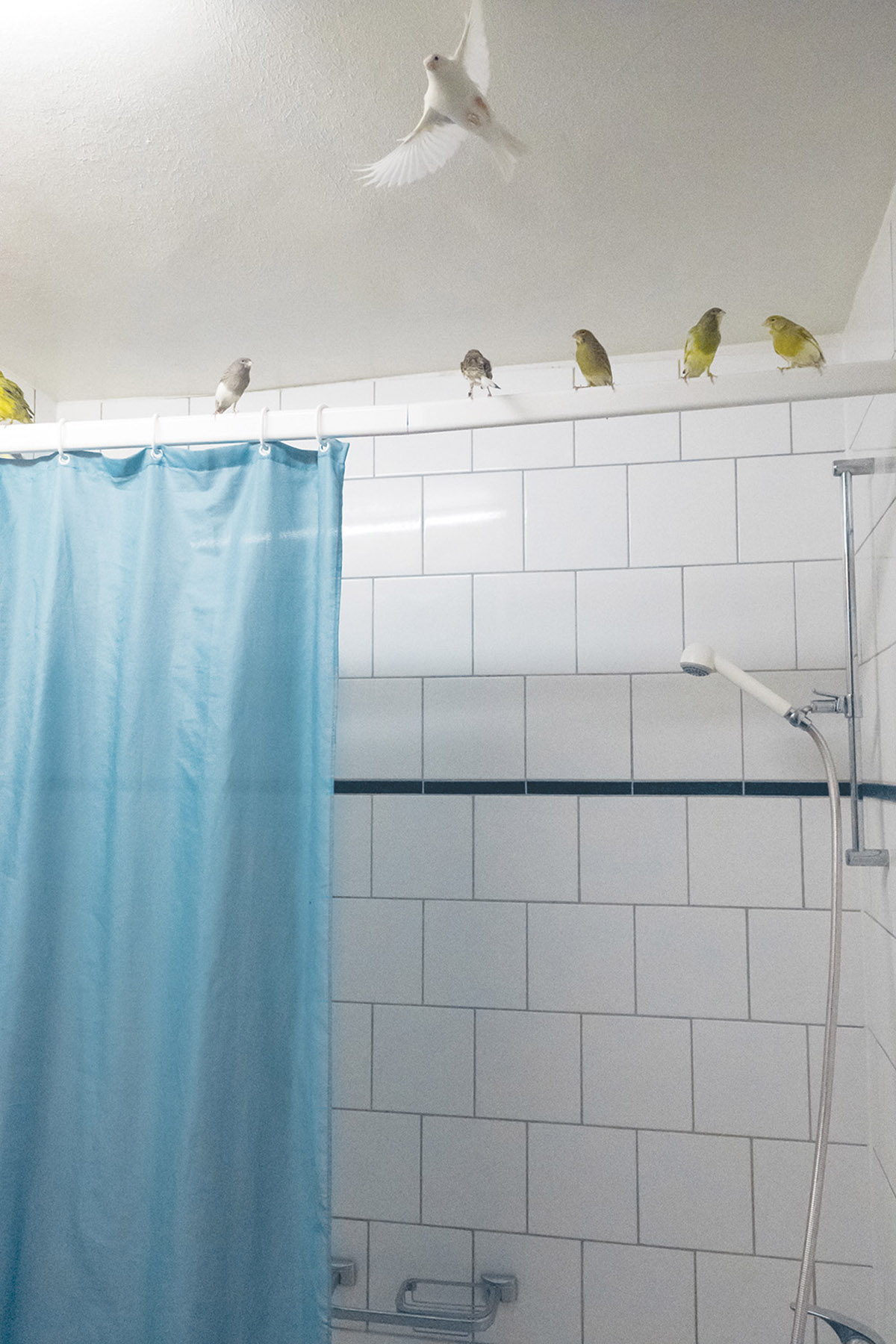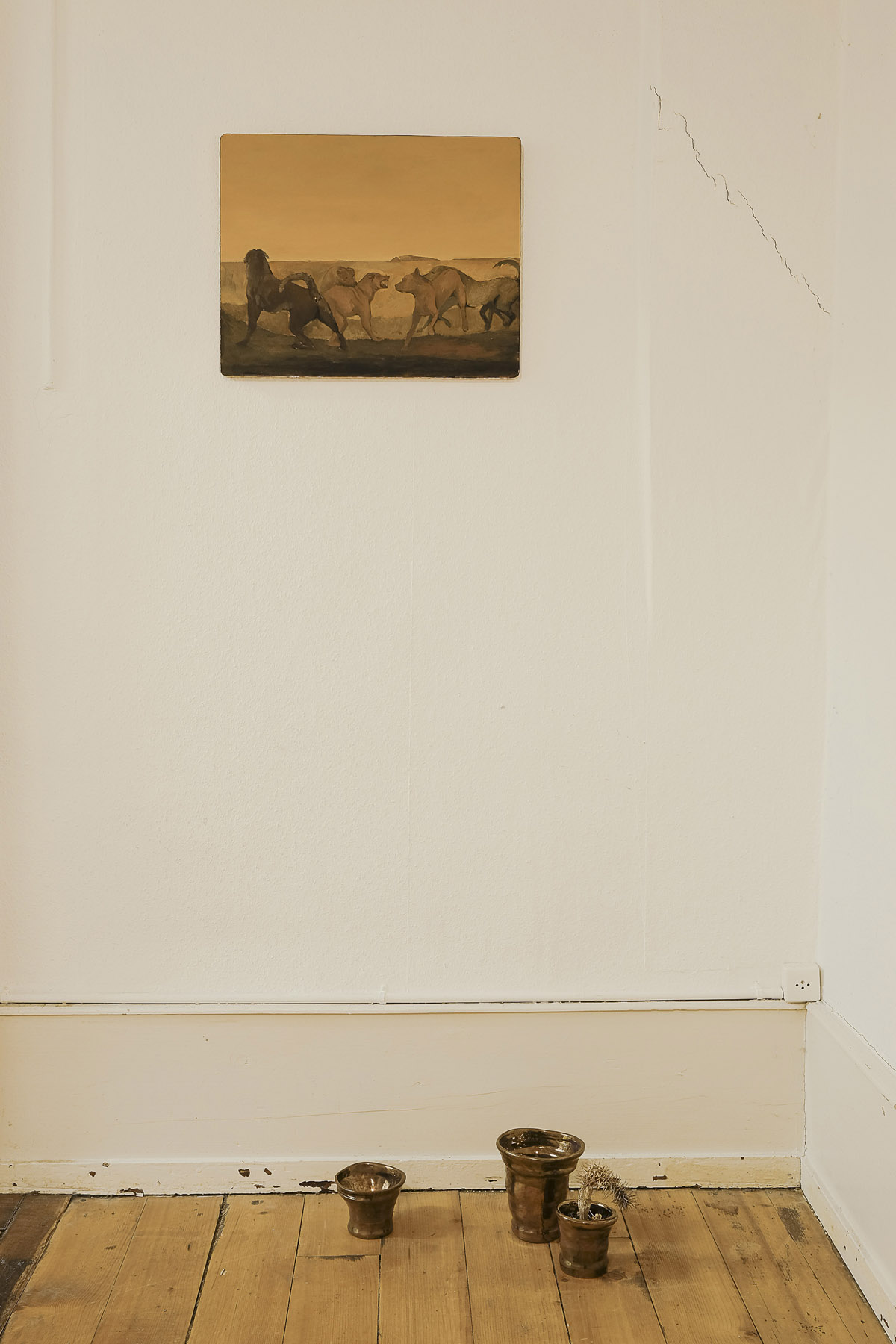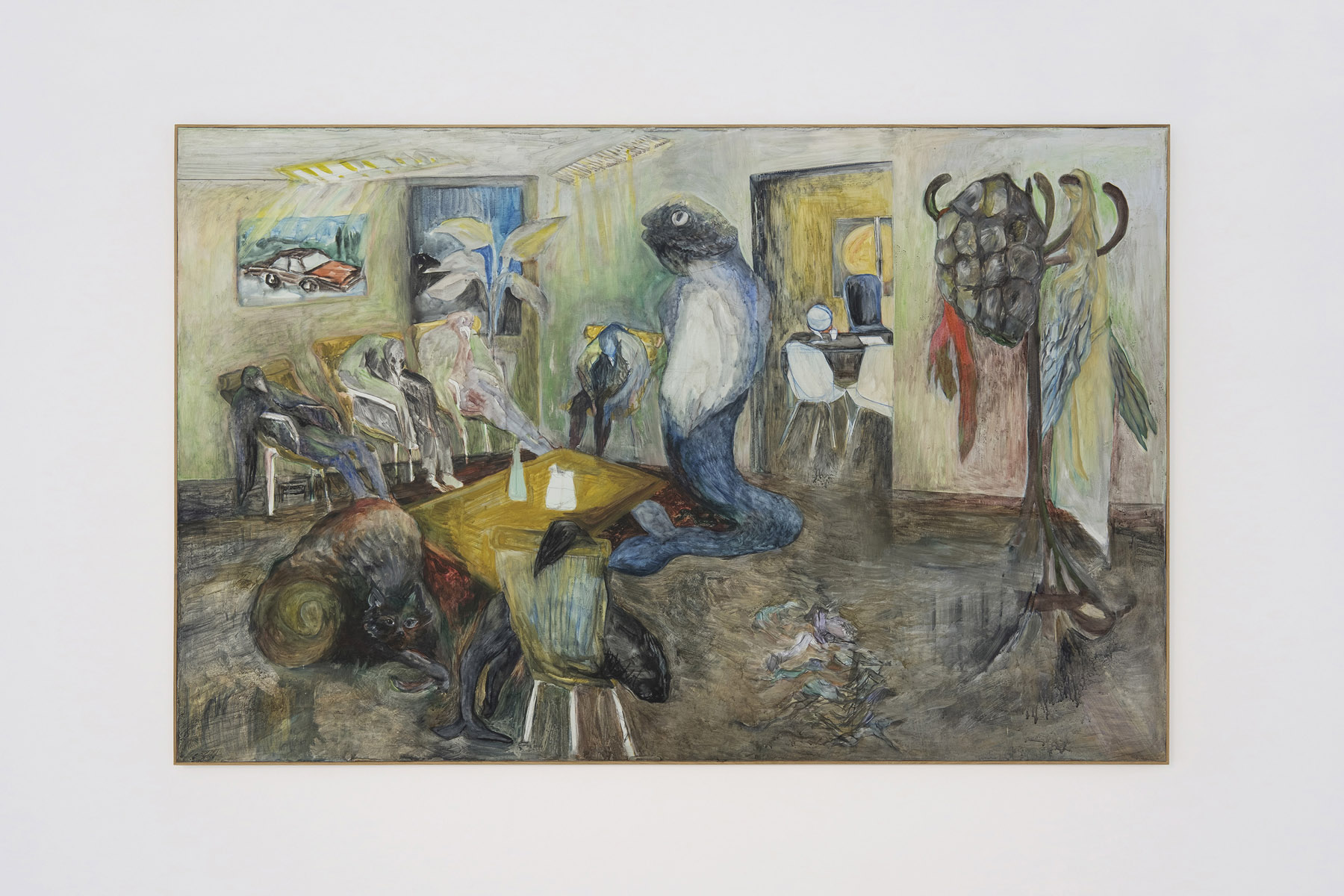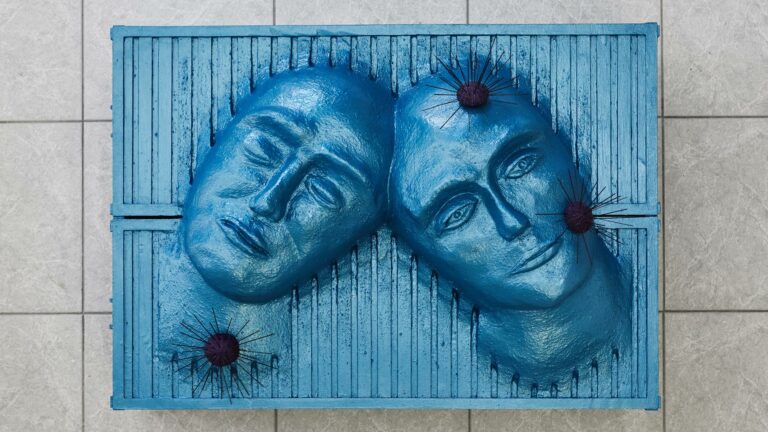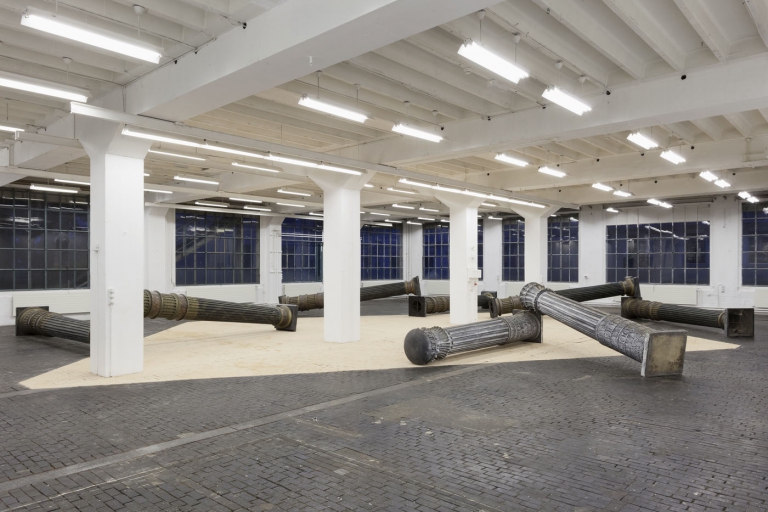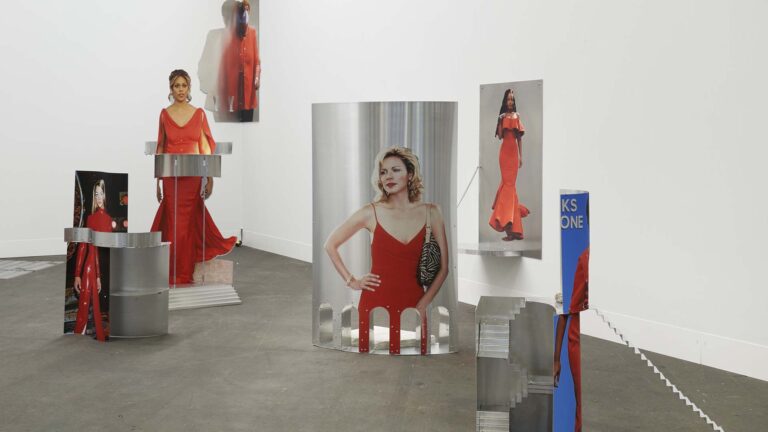Artists: Hadas Auerbach, Alex Ayed, Robert Brambora, Zuzanna Czebatul, Manuela Gernedel & Fiona Mackay, Jacent, Sarah Margnetti, Hamish Pearch, Ruiz Stephinson
Exhibition title: La psychologie des serrures
Curated by: Sans titre (2016) in collaboration with the CAN Team
Venue: CAN Centre d’Art Neuchâtel, Neuchâtel, Switzerland
Date: December 19, 2020 – March 28, 2021
Photography: Sebastian Verdon / all images copyright and courtesy of the artists, CAN Centre d’Art Neuchâtel and Sans titre (2016)
At CAN Centre d’art Neuchâtel, it’s always a question of offering new experiences to visitors, whether by unveiling an artist’s original work, proposing curatorial experiments, or questioning the traditional exhibition format.
To this end, the CAN team welcomed Sans titre (2016), a Paris gallery that previously took the form of a nomadic project space inhabiting domestic spaces and hidden, secret sites. Sans titre (2016)’s carte blanche at CAN concerns one site in particular, that of the CAN apartment, located in the building adjacent to the art center, which ordinarily receives guest artists and curators. For the first time, it will be open to the public.
This exercise allows us to engage the long tradition of exhibitions held in the domestic sphere, along with the wonders and surprises they hold in store for visitors.
Conceived over a year ago and initially scheduled for April 2020, this exhibition took on a whole new meaning in recent months when the participating artists, and with them more than half of humanity, were confined at home for weeks on end. If the home was already “our corner of the world1” as Gaston Bachelard (from whom the title of this exhibition is borrowed) wrote, it has overnight become our universe.
The home is intrinsically linked to human nature. Its image is also often the subject of psychological comparisons: its various floors come to represent the accumulation of experiences that punctuate a life. The ground floor characterizes education, the founding elements of the personality, much as the home’s foundations, the cellars, are the reflection of the depths of the soul, as Jung described them.
Sans Titre (2016) gave each guest artist or group of artists their own space, a room of their own.
From the bedroom to the bathroom, from the garden to the kitchen, the exhibition is thus constructed as a multiplicity of small personal exhibitions. Some artists have respected the rooms’ original uses, while others have travestied them. All have promoted an intimate relationship with the works, placing the visitor’s experience at the heart of their discourse.
The house is also a privileged site of memory. It’s where memories are created, notably during childhood, and it is almost always where we physically stock them – family photo albums, postcards, preciously archived tickets to a cinema screening…
From these sometimes contradictory memories and experiences have emerged diverse proposals.
Some artists have chosen to evoke specific periods in life, hinting at the ghost of a teenager’s room, at loneliness, and the anxieties of refuge in adulthood.
Still others illustrate the range of relationships that can be maintained with a living space: it’s sometimes a site of danger – most accidents are domestic – but above all a site of comfort and hospitality. The home is also the sacred place of the family unit and most of the social interactions of its members, whether happy or funereal, take place within it.
The numerous rituals implied by the home are well-known; measured, codified habits are repeated therein everyday. These are sometimes symptomatic of the power struggles that take place within the household, especially over women, who still inherit much of the domestic burden.
Finally, some artists have chosen to speak of the absence of a place of one’s own, and the rootlessness such a condition implies.
One observation applies to all the artists involved, however: “The home shelters dreams, protects the dreamer, and allows us to dream in peace2.”
-Marie Madec
1, 2 Gaston Bachelard, The Poetics of Space (1957)
Ruiz Stephinson, installation view at CAN – Centre d’Art de Neuchâtel
Ruiz Stephinson, Guardian (maybe pregnant with a penis), 2020, neon, high voltage transformer, aluminium, galvanized steel, 90 x 62 x 18 cm
On the ground: Ruiz Stephinson, chair #2, 2020, concrete, aluminum, MDF, rubber, 66 x 56 x 68cm / On the wall: Ruiz Stephinson, guardian (maybe flying with wings), 2020, neon, high voltage transformer, aluminum, galvanized steel, 90 x 77 x18 cm
Manuela Gernedel & Fiona Mackay, Dining Out, 2020, acrylic, liquid pigments and emulsion, site-specific work, 540 x 215 cm
Manuela Gernedel & Fiona Mackay, Dining Out, 2020, acrylic, liquid pigments and emulsion, site-specific work, 540 x 215 cm
Zuzanna Czebatul, installation view at CAN – Centre d’Art de Neuchâtel
Zuzanna Czebatul, The Cut (Fish), 2020, Concrete, pigments, 31 x 66 x 3,5 cm
Zuzanna Czebatul, installation view at CAN – Centre d’Art de Neuchâtel
Zuzanna Czebatul, installation view at CAN – Centre d’Art de Neuchâtel
Alex Ayed, installation view at CAN – Centre d’Art de Neuchâtel
Alex Ayed, Untitled (Shelf I), 2020, marble, wood, glass, copper wire, found objects, 29 x 16x 6 cm
Left: Alex Ayed, Untitled (Shelf II), 2020, marble, wood, glass, copper wire, found objects, 27 x 16 x 6 cm / Right: Untitled (Shelf III), 2020, marble, wood, glass, copper wire, found objects, 27 x 16 x 6 cm
Alex Ayed, installation view at CAN – Centre d’Art de Neuchâtel
Sarah Margnetti, Intertwined/Deconstructed Furniture, 2020, Acrylic and oil paint on MDF, variable size
Sarah Margnetti, Intertwined/Deconstructed Furniture, 2020, Acrylic and oil paint on MDF, variable size
Sarah Margnetti, installation view at CAN – Centre d’Art de Neuchâtel
Hadas Auerbach, installation view at CAN – Centre d’Art de Neuchâtel
Hadas Auerbach, Knives, 1-23/23, 2020, ceramic and glaze on printed textile, various dimensions
Hadas Auerbach, Knives, 1-23/23, 2020, ceramic and glaze on printed textile, various dimensions
Hamish Pearch, installation view at CAN – Centre d’Art de Neuchâtel
Hamish Pearch, Electricityscape, 2020, wood, charcoal, paint, slides (images artist’s own), various dimensions
Hamish Pearch, Electricityscape, 2020, wood, charcoal, paint, slides (images artist’s own), various dimensions
Robert Brambora, installation view at CAN – Centre d’Art de Neuchâtel
Robert Brambora, Untitled, 2020, ceramic, copper glaze, epoxy resin, 11 x 16 x 20 cm
Robert Brambora, Bed, 2020, foam mattress, glass, dried flowers, blankets, 90 x 200 x 17,5 cm
On the wall: Robert Brambora, Untitled, 2020, oil on wood, copper, 40 x 50 cm / On the floor: Untitled, 2020, ceramic, copper glaze, various dimensions
Jacent, installation view at CAN – Centre d’Art de Neuchâtel
Jacent, Flammes, 2020, 2/2, fired clay, 31 x 9 x 11 cm
Jacent, Prémonition, 2020, watercolor and gesso on wood, oak artist’s frame, 168 x 109 cm
Jacent, Chouette, 2020, engobes on earthenware tiles, plywood, lacquer, lighting system, joints, lampshades, 60 x 125 x 18,5 cm
Jacent, installation view at CAN – Centre d’Art de Neuchâtel
Jacent, installation view at CAN – Centre d’Art de Neuchâtel














